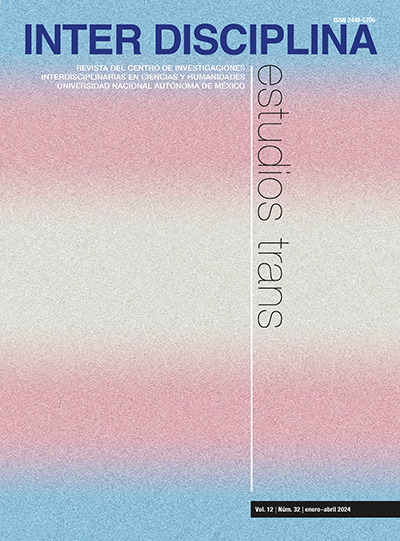Decision power of political parties in the LXIII and LXIV Mexican Legislatures: an analysis with game theory and simulations
Main Article Content
Abstract
Decisions made in different congresses are of great importance for the social and economic sphere of a country, since without cooperation between parties, the approval of reforms and laws can be stalled. The way in which decision-making’s power dynamics between the different political forces is studied can be approached from a quantitative point of view. That is why in the present investigation the decision-making power of political parties in the LXIII and LXIV Legislatures is analyzed through different indices offered by cooperative game theory and through simulations developed in Scilab. The importance of studying this type of topics from an interdisciplinary approach lies in the better understanding of political behavior within congresses, and in the knowledge of the multiple ways that can be had to approve the different agreements. It is found that in three years MORENA increased its decision-making power by more than 60% and the PRI has lost almost 50% of it. It was also possible to verify that the PRI is the party that benefits the most from making coalitions and that the PAN is the most harmed in this type of analysis.
Downloads
Article Details
Citas en Dimensions Service
References
Amer, R., Carreras, F. y Magaña, A. 2003. Juegos simples e índice de poder de Shapley-Shubik. Revista de Estudios Políticos (Nueva Época), 121: 107-136.
Aumann, R. y Dreze J. 1974. Cooperative games with coalition structures. International Journal of Game Theory, 3: 217-237.
Alonso, J. y Fiestras, G. 2002. Modification of the Banzhaf value for games with a coalition structure. The Annals of Operations Research, 109: 213-227.
Banzhaf, J. 1965. Weighted voting doesn’t work: A mathematical analysis. Rutgers Law Review, 19(2): 317-343.
Bonilla, C. 2004. A model of political competition in the underlying space of ideology. Public Choice-Springer, 121(1/2): 51-67.
Bonilla, C. y Gatica, A. 2005. Economía política neoclásica y América Latina: una mirada a la bibliografía. El Trimestre Económico-FCE, 72(285-1): 179-211.
Carreras, F. 1992. Estudio coalicional de los parlamentos autonómicos españoles de régimen común. Documento de Trabajo 92-13 (Serie de Economía 08): 1-21.
Carreras, F. y Owen, G. 1995. Valor coalicional y estrategias parlamentarias. Revista Española de Investigaciones Sociológicas, 71/72: 157-176.
Chua, V. y Huang, H. 2003. The Shapley-Shubik index, the donation paradox and ternary games. Springer, 20(3): 387-403.
Colomer, J. M. Instituciones políticas. Barcelona: Ariel.
Deegan, J. y Packel, E. 1979. A new index of power for simple n-person games. International Journal of Game Theory, 7: 113-123, 1979.
Downs, A. 1957. An economic theory of political action in a democracy. Journal of Political Economy, 65(2): 135-150.
Felsenthal, D. y Machover, M. 1996. Alternative forms of the Shapley value and the Shapley-Shubik index. Springer, 87(3): 315-318.
Geddes, B. 1991. A game theoretic model of reform in Latin American democracies. American Political Science Review, 85(2): 371-392.
Gilles, Robert P. 2010. The cooperative game theory of networks and hierarchies. USA: Springer.
Gillies, Donald Bruce. 1953. Some theorems on n-person games. Tesis de doctorado. Princeton: Princeton University.
Heywood, A. 2017. Political ideologies: an introduction. 6a ed. Basingstoke: Macmillan International Higher Education.
Hinich, M. y Munger, M. 1994. Ideology and the theory of political choice. Ann Arbor, USA: University of Michigan Press.
Holler, M. J. y Packel, E. W. 1983. Power, luck and the right index. Journal of Economics, 43(1): 21-29.
Hotelling, H. 1929. Stability in competition. Economic Journal, 39: 41-57.
Kirsch, W. y Langner, J. 2010. Power indices and minimal winning coalitions. Springer, 34(1): 33-46.
Larios Ferrer, J. L. 2022. Estabilidad e inestabilidad políticas en las LXII y LXIV Legislaturas mexicanas, desde la perspectiva de la teoría de juegos. Revista Mexicana de Ciencias Políticas y Sociales, 67(244). https://doi.org/10.22201/fcpys.2448492xe.2022.244.72754.
Laruelle, A. y Valenciano, F. 2001. Shapley-Shubik and Banzhaf indices revisited. Informs, 26(1): 89-104.
Leech, D. 1990. Power indices and probabilistic voting assumptions. Public Choice, 66(3): 293-299. https://doi.org/10.1007/BF00125780.
López Sandoval, I. M. 2016. Elección pública y análisis institucional de la acción gubernamental. Economía Informa, 396(1): 49-66.
Munkres, J. R. 2000. Topology, 2a ed. USA: Prentice Hall.
Nacif, B. 2003. Policy making under divided government in Mexico. Working Paper 305, Kellogg Institute, 1-25.
Nash, J. 1953. Two-person cooperative games. Econometrica, 21(1): 128-140. https://doi.org/10.2307/1906951.
Negretto, G. L. 2003. Diseño constitucional y separación de poderes en América Latina. Revista Mexicana de Sociología, 65(1): 41-75.
Neumann, J. V. y Morgenstern, O. 1944. Theory of games and economic behavior. USA: Princeton University Press.
Owen, G. 1977. Values of games with a priori unions. En R. Henn y O. Moeschlin (eds.), Mathematical economics and game theory. Nueva York: Springer Verlag, 76-88.
Owen, G. 1981. Modification of the Banzhaf-Coleman index for games with a priori unions. En M. J. Holler (ed.), Power voting and voting power. Wurzburg, Alemania: Physica-Verlag, 232-238.
Paoli Bolio, F. J. 2012. Tiempo de coaliciones: cinco lustros de elecciones en México. Revista IUS, 6(30): 136-148.
Parilina, E. y Sedakov, A. 2015. Stochastic approach for determining stable coalition structure. International Game Theory Review, 4(17): 1-22.
Peleg, B. y Sudholter, P. 2007. Introduction to the theory of cooperative games. 2a ed. Nueva York: Springer. https://doi.org/10.1007/978-3-540-72945-7_1.
Rota, G. C. 1964. The numbers of partitions of a set. American Mathematical Monthly, 71(5): 498-504.
Sánchez, S. F. 1994. Introducción a la matemática de los juegos. México: Siglo XXI.
Shapley, L. S. 1963. Some topics in two-person games. En Dresher, M., Shapley, L. S. y Tucker, A. W. (eds.), Advances in game theory. Princeton: Princeton University Press, 1-28. https://doi.org/10.1515/9781400882014-002.
Shapley, L. S. y Shubik, M. 1954. A method for evaluating the distribution of power in a committee system. American Political Science Review, 48: 787-792.
Shick, P. L. 2007. Topology: point-set and geometric. USA: Wiley-Interscience.
Vargas Hernández, J. G. 2006. La nueva economía política en la transformación institucional del Estado-Nación. Problemas del Desarrollo. Revista Latinoamericana de Economía, 37(145): 31-51.

Esta obra está bajo una Licencia Creative Commons Atribución-NoComercial-SinDerivar 4.0 Internacional.





